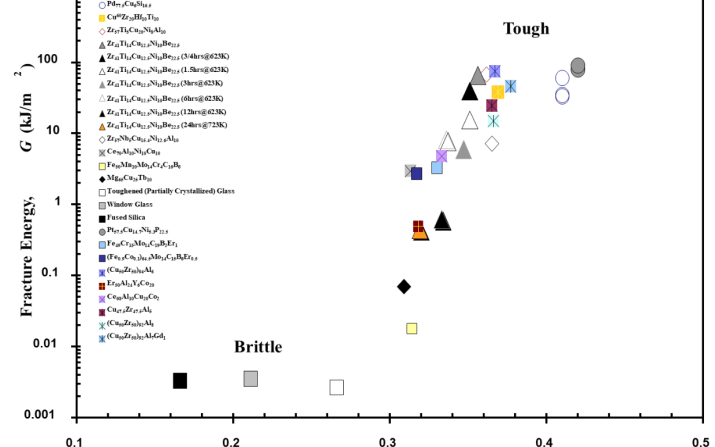
AMMRC Celebrates 35 years of Mechanical Characterization at CWRU

The years 2000-2005 continued work from the 1990’s with new funding exceeding $5M, along with continued growth of the AMMRC manufacturing facilities and Lewandowski research group to include: Nishad Prabhu (M.S.), Deenesh Padhi (M.S.), Nate Atwood (M.S.), Joel Larose (M.S.), Sharon Johnson (M.S.), Feroz Jokhio (M.S.), Josh Caris (M.S.), Dave Hotter (M.S.), Kim Mayer (M.S.), Awlah Awadallah (M.S.), Alex Thurston (M.S.), Dustin Bush (M.S.), Hala Hassan (Ph.D.), Dr. B.C. Ko, Dr. L.O. Vatamanu, Dr. Y. Liu, Dr. D. Li.
Multiple new individual and collaborative multi-year research grants were obtained from Reference Metals/CBMM, Defense Advanced Research Projects Agency (DARPA), Boeing, Army Research Office (ARO), Brush-Wellman, Energy Research and Development Agency (ERDA), NASA Glenn Research Center, ALCOA, MTS Systems Corporation, Office of Naval Research (ONR), General Electric, Timken, Lawrence Livermore National Lab (LLNL), Department of Energy (DoE), National Institute of Health (NIH), Air Force Research Lab (AFRL), Army Research Lab (ARL). A variety of industrially relevant projects were conducted in close collaboration with the companies and agencies listed, as summarized below.
In the area of bulk metallic glasses, novel non-magnetic iron based bulk metallic glasses with excellent corrosion resistance and thermal stability at low/intermediate temperatures were being considered for a variety of coatings applications, including cannisters for long-term storage of spent nuclear fuels in the Yucca Mountain, NV, of interest to DoE and DARPA. Aluminum alloy based metallic glasses were being extruded to create novel nano-composite aluminum alloys with strength and stiffness values well in excess of commercial aluminum alloys of interest to Boeing and DARPA. In addition, the fracture toughness/damage tolerance of these bulk metallic glasses was tuned via subtle changes in chemistry to explore/predict the ductile-to-brittle transition of this class of materials, Figure 1, while the novel use of fusible nano-scale coatings was successful in detecting local temperature rises at/near shear bands in metallic glasses, Figure 2. Work on deformation-processed aluminum alloy/composite laminates continued to explore the excellent toughness and damage tolerance for aircraft engine blade containment and ballistic applications of interest to ARO, LLNL, ARL, and ALCOA, while initial work on refractory-based Nb-Si alloys/composites for future high temperature applications of interest to GE and AFRL was started and continues with current students.
A selection of highly cited papers from 2000-05 that emerged from his research group and collaborations included work on the areas mentioned above with work on high temperature intermetallics under consideration for a number of aero-engine applications that continues today with GE and AFRL and includes “Ultrahigh temperature Nb-silicide-based composites.” Work on bulk metallic glasses defined the ductile-to-brittle transition and chemical tuning of the elastic constants to increase damage tolerance leading to this paper, “Intrinsic plasticity or brittleness of metallic glasses,” Figure 1, while “Temperature rise at shear bands in metallic glasses” used nano-scale fusible coatings to detect temperature rise at/near shear bands, Figure 2.
We invite you to join us in the AMMRC’s 35th anniversary celebration as we celebrate decades of research, development, and Center milestones. Visit the AMMRC web site, ammrc.case.edu, and keep watch on social medial for insights on the AMMRC through the decades as we share stories about the evolving laboratory and honor the efforts of the diverse academics, staff, and students that have propelled the AMMRC forward.
Figure 1. Predicting the ductile-to-brittle transition of bulk metallic glasses via chemical tuning of the elastic constants. Photo courtesy of Philosophical Magazine Letters “Intrinsic plasticity or brittleness of metallic glasses,.”
Figure 2. The melting of nano-scale coatings applied to surfaces of bulk metallic glass samples was used to detect local temperature rise at/near shear bands during deformation/fracture. Photo courtesy of Nature Materials “Temperature rise at shear bands in metallic glasses.”
Social media: Join us on social media for fun and engaging content that will help you discover the AMMRC’s history and where it’s heading in the future. #AMMRC35.
